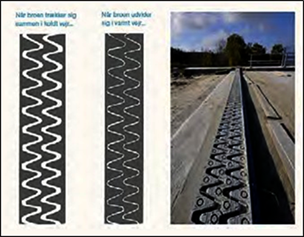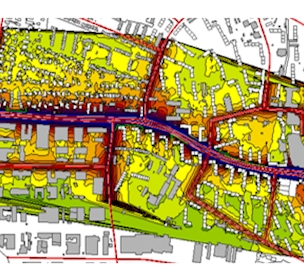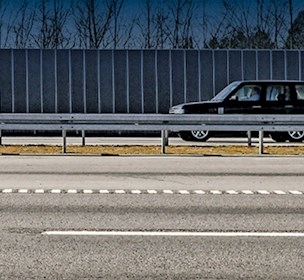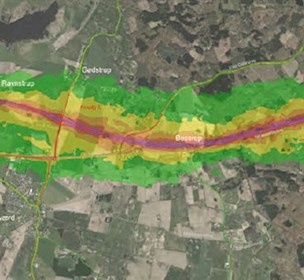Are expansion joints on bridges noisy?
For the car driver, the noise from the expansion joints on the bridge is quickly forgotten, but for those living nearby the bridge, the impulsive noise can be very annoying. And there is good reason to take this noise seriously.
Most of us are familiar with driving over a motorway bridge. You feel a small bump each time the wheels move over one of the bridge’s joints. You don’t tend to think much about the sound when you’re inside a car, but neighbours to the bridge will often be affected by the many thousands of impulsive sounds they are subjected to 24 hours a day. It can be annoying, yet there is no tradition or basis for taking this into account when measuring or calculating road traffic noise.
The special character of noise
When the wheels of a vehicle pass over an expansion joint, a brief “click” or “clonk” sound is emitted, in addition to the usual vehicle noise on the road. In noise terminology, this “click” sound is called an impulse. It is brief and spreads from the road together with the ordinary motorway noise. It is not entirely clear where or how it occurs, but regardless, people appear to be more annoyed by impulsive noise than they are by ordinary motorway noise.For other types of noise – e.g. industrial noise – companies are “punished” at 5 dB if the noise includes impulses which are clearly audible (prominent) to their neighbours. It is therefore standard procedure to study the character of the noise as it sounds to those living in the neighbourhood when measuring noise from an industry.
Expansion joints are unavoidable when constructing road bridges, as the bridge must be able to contract or expand without destroying the road or its own construction (see figure 1).

The Danish Road Directorate often receives complaints about road traffic noise, as well as complaints about noise from motorway bridges, where impulses from expansion joints can be particular annoying to neighbours. After a recent renovation of the Gudenå Bridge near Randers (part of the E45 motorway), there have been complaints that new impulsive sounds have been generated (described as “clonk” and “click” sounds) in the area. Some of those making the complaints live up to 1,000 metres away from the bridge.
Measurements around the Gudenå Bridge
Based on the repeated complaints from neighbours, the Danish Road Directorate decided to study the noise in the neighbouring area to the bridge for audibility of the impulses that are generated by vehicles driving over the expansion joints. Measurements and sound recordings were made at neighbouring positions west of the bridge on a day with a weak (up to 5 m/s) southeasterly wind, i.e. in a downwind situation where the wind carried the noise from the motorway against the measurement locations. This is standard procedure for noise measurements. The noise was measured in several places, including close to the road bridge, and at a distance of 450 metres.The results show a reasonably good correlation between the audibility of the impulses and the distance from the bridge. The impulses become less audible with increasing distance from the bridge.
Subjective assessment
Besides the objective analyses of the audibility of the impulses, they were also assessed subjectively by playing back sound recordings on headphones. This useful, but not fully scientific assessment showed that there is a high level of correlation between the subjective assessment and the objective analyses of impulse audibility.What we have learned from the Gudenå Bridge
It is a new initiative for the Danish Road Directorate to test out a method of assessing impulse noise annoyance from driving over expansion joints on a motorway bridge. The results show that there are grounds for taking the impulsive noise from expansion joints seriously, especially on bridges close to residential areas.
Attempts will now be made on the Gudenå Bridge to adjust the asphalt surface so that there is less difference in gradient between the asphalt wearing course and the expansion joints. It is hoped that this will reduce the problem of impulsive noise generation.
Read also How does the motorway sound like? and Listen to the future road or sign up for upcoming events, courses or training here.

Traffic noise is dangerous to our health
/Article
Every year, at least 200-500 Danes die prematurely due to traffic noise – what can we do about it?

Listen to the future road
/Case
The Danish Road Directorate uses auralisation to explain how a new road will sound to stakeholders.

What does a motorway sound like?
/Article
Find out how auralisation is used to explain the scope and impact of road noise.

